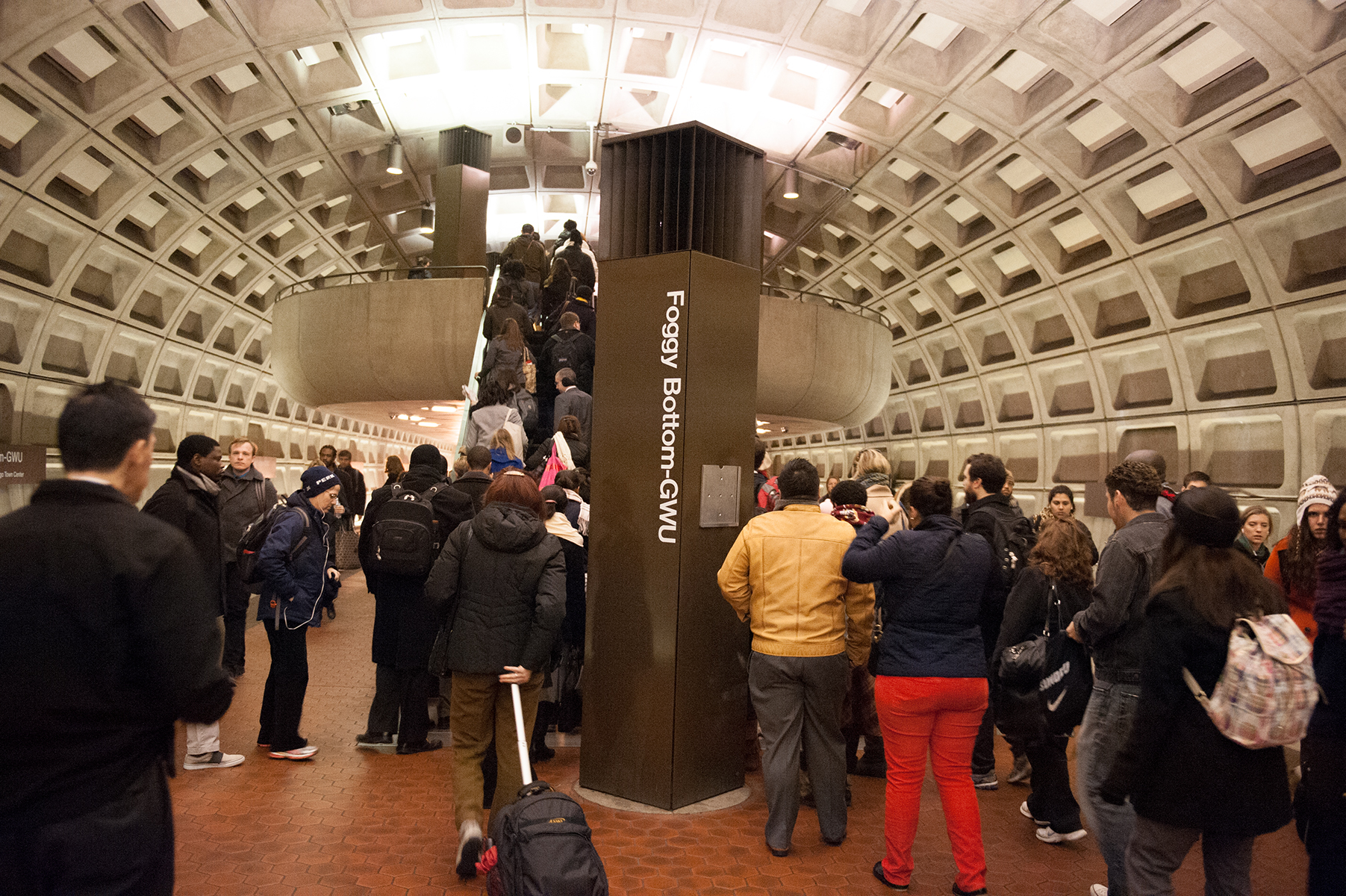WMATA’s Planners’ Principles for Creating a Customer Focus
In its efforts to make Metro safer and more reliable, Metro puts the customer first.

Addressing capacity constraints in our stations, such as Foggy Bottom shown here will provide a safer and more reliable trip for Metro customers. Image source: WMATA.
The last year, implementation of Momentum, the WMATA strategic plan, was paused to permit a laser focus on all things safety and reliability. Safety and reliability are what our customers deserve and what they are asking for. Here’s how we pledge to address these critical issues at Metro within the context of putting customers first.
Engage our customers. And listen. Metro’s new General Manager and CEO, Paul J. Wiedefeld has dedicated a great deal of time since he came aboard talking with and listening to his constituents. He did this because he knows that to get their support he has to listen to their concerns and ideas for our system and services. Metro has the tools in place to regularly engage their customers, starting with the American Planning Association-award-winning Public Participation Plan (PDF) but also including a newly formed customer community, Amplify, available for online conversation on a wide variety of topics and initiatives. Let’s follow the lead of the new GM and engage our customers in dialogue on addressing today’s problems as well as rebuilding Metro for the future.
Collaborate internally on core policy initiatives. Over time, WMATA has grown to 13,000 employees in dozens of offices and departments with myriad responsibilities for planning, operating and maintaining the system. Much of this growth has occurred to respond to a new need, a new challenge, or a new service. The size, depth and breadth of the Authority provides an opportunity for collaboration on major initiatives that cross modal, organizational and departmental boundaries such as safety, asset management, fare policy, customer communications, financial management and budgeting. Strategic planning provides a forum to bring disparate interests together, and their invaluable information and talent, towards identifying the common ground and developing strategic plans for meeting Metro’s goals and objectives.
Learn from our competitors. The world is changing, and we’re going to get nimbler and change faster. As discussed in previous PlanItMetro posts, Metro lost a lot of riders in the wake of customers frustrated by our performance and with few economic incentives to use our products and services. New products came on line with the necessary conveniences available to attract our customers. These include transportation network companies such as Uber, Lyft and Bridj as well as car and bike sharing. These aren’t bad trends. Research shows (TRB Special Report 319: Between Public and Private Mobility: Examining the Ride of Technology-Enabled Transportation Services) that the integration of these service options into the regional transportation network can reduce auto ownership and vehicle miles traveled, creating a more economically and environmentally sustainable transportation system for the region. Metro has the opportunity to think proactively about how to partner with these organizations, such as we are with Lyft, to meet the needs of our customers as providers of bus bridges and other services during maintenance, first mile-last mile options or after hours services. Meanwhile, we should examine the opportunities to leverage technology to create our own information products and services that attract customers to these services in the first place while we continue to work on our maintenance, safety and state of good repair needs.
Think proactively, not reactively. The events of the last year have put Metro in a position in which it must focus on addressing dozens of very specific corrective actions put forth by the Federal Transit Administration and National Transportation Safety Board to address observed problems with the Authority’s rail system safety. No one can argue with the merits of dedicating our resources to fixing those very real and serious problems. However, the focus on those improvements should not prevent the Authority from developing comprehensive strategic approaches to preventing those conditions in the first place. Metro has the resources at hand to help us. Metro has completed a wealth of analysis, dating as far back as 2001, that shows the link between safe and reliable operations of our rail and bus networks and targeted investments in our core capacity (PDF), including enhanced station platforms, entrances and exits, vertical circulation, rail junctions, and more investments designed to ensure the safe and efficient flow of customers through our system. Metro 2025, the capital program developed to implement the medium-term aspects of Momentum, identifies several key investments designed to improve the performance of the network where congestion threatens the safety and reliability of the system today. Qualifying for federal funding of those improvements requires that we advance them past “pipe dreams” to prepare them for project development and environmental analysis.
Think outside of the box. Nothing can be more counterproductive to progress than maintaining status quo simply because “that’s the way it’s always been done”. We cannot afford to let events define us. We need to redefine what we bring to the region in terms of mobility, accessibility and sustainability for the region’s social, economic and environmental future with new approaches to an ever changing market. We will conduct peer exchanges and engage our customers, funding partners and Board of Directors to identify, propose, and pilot test new initiatives designed to fulfill our responsibilities as outlined by the Federal Transit Administration, but also our mission to be a world-class transit provider for the National Capitol region.
What do you think Metro should do in 2016 to improve safety, reliability and quality of service?


Recent Comments